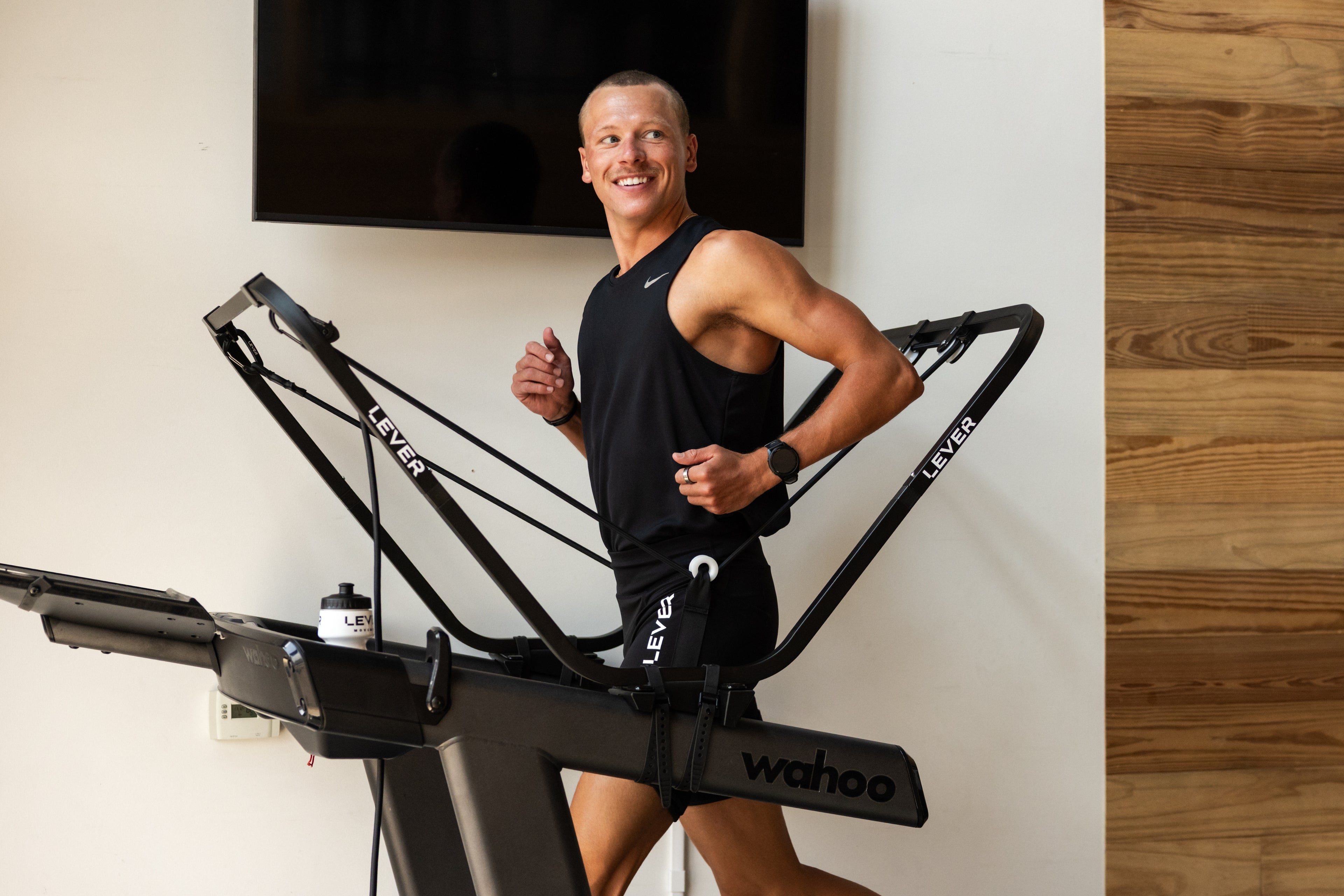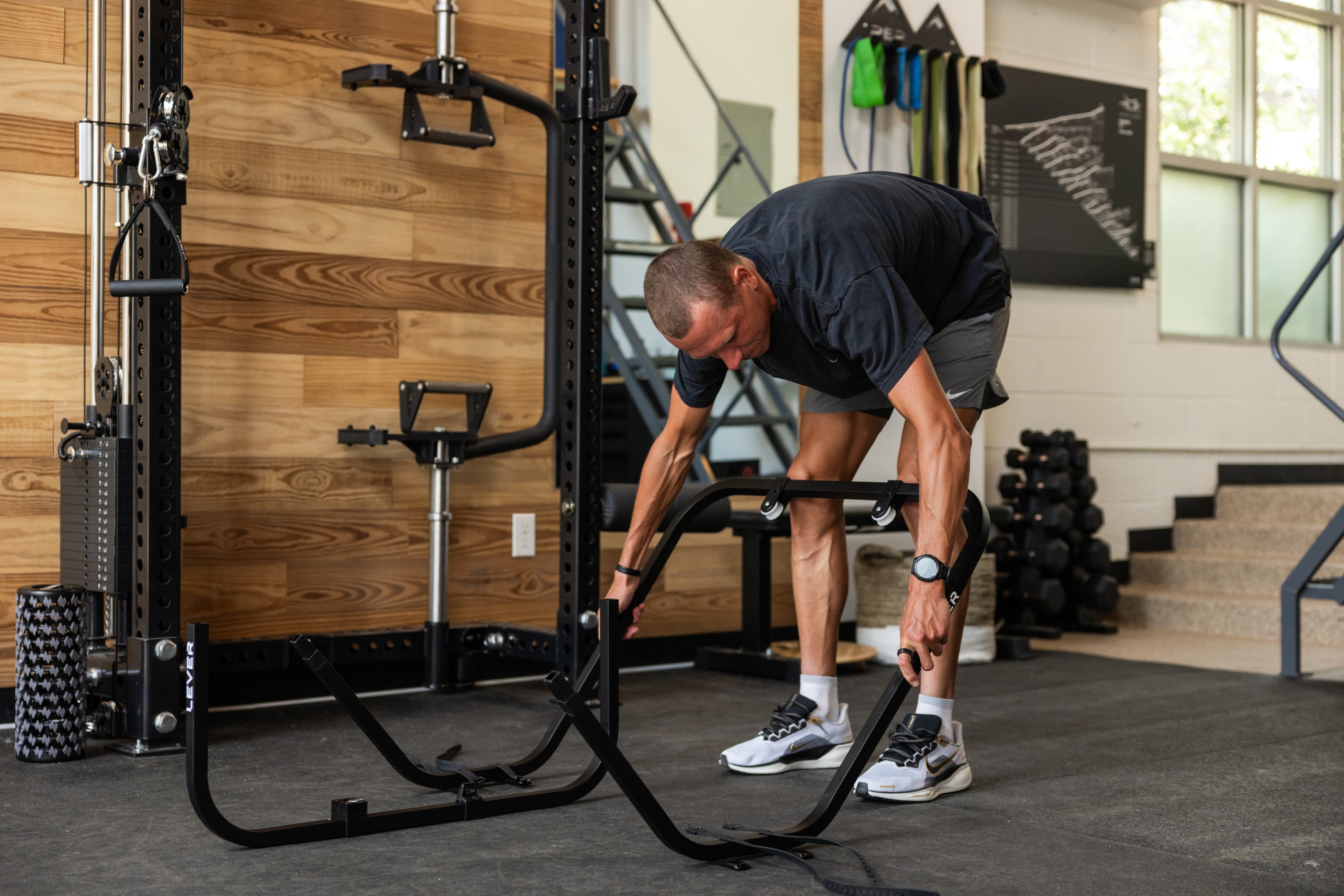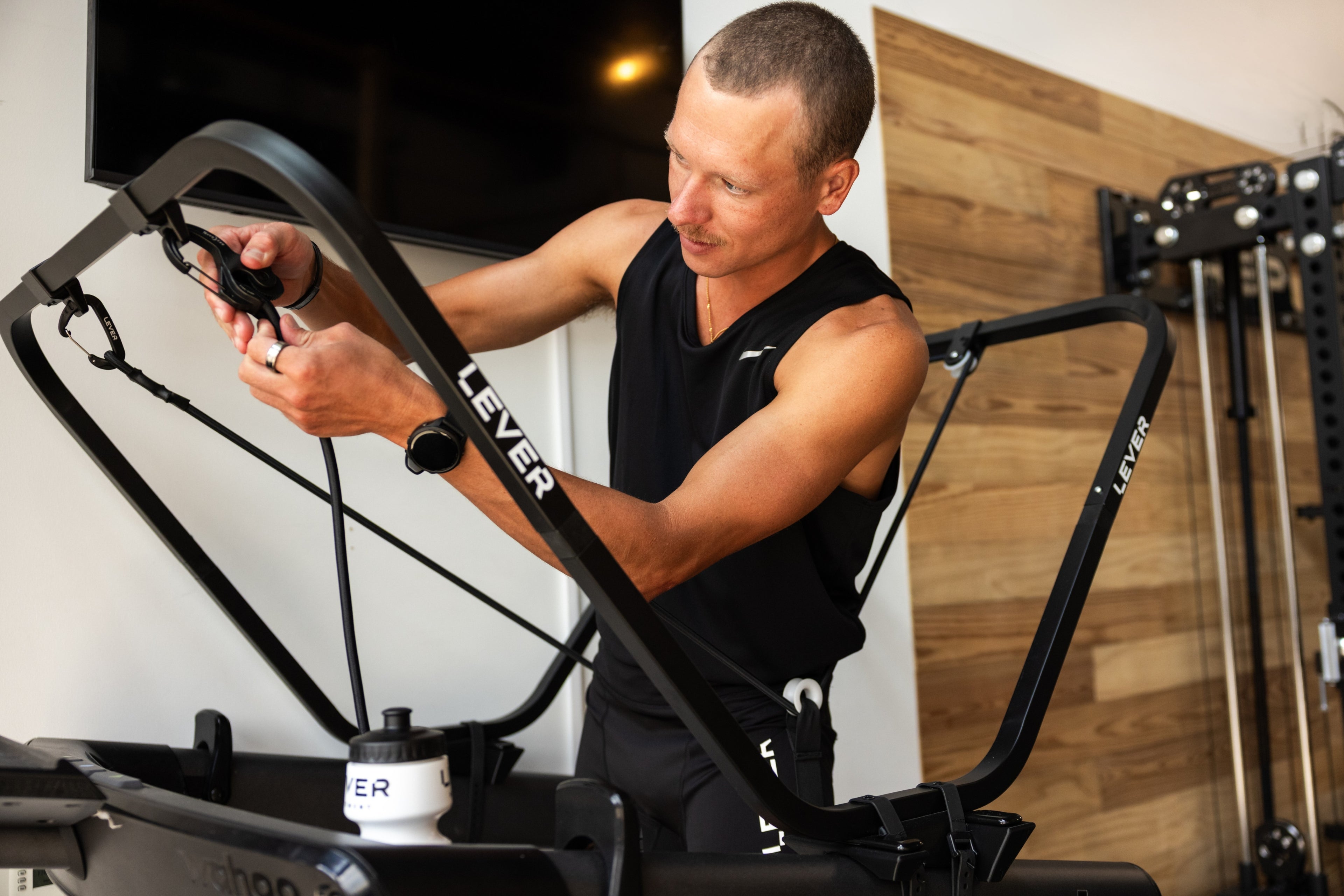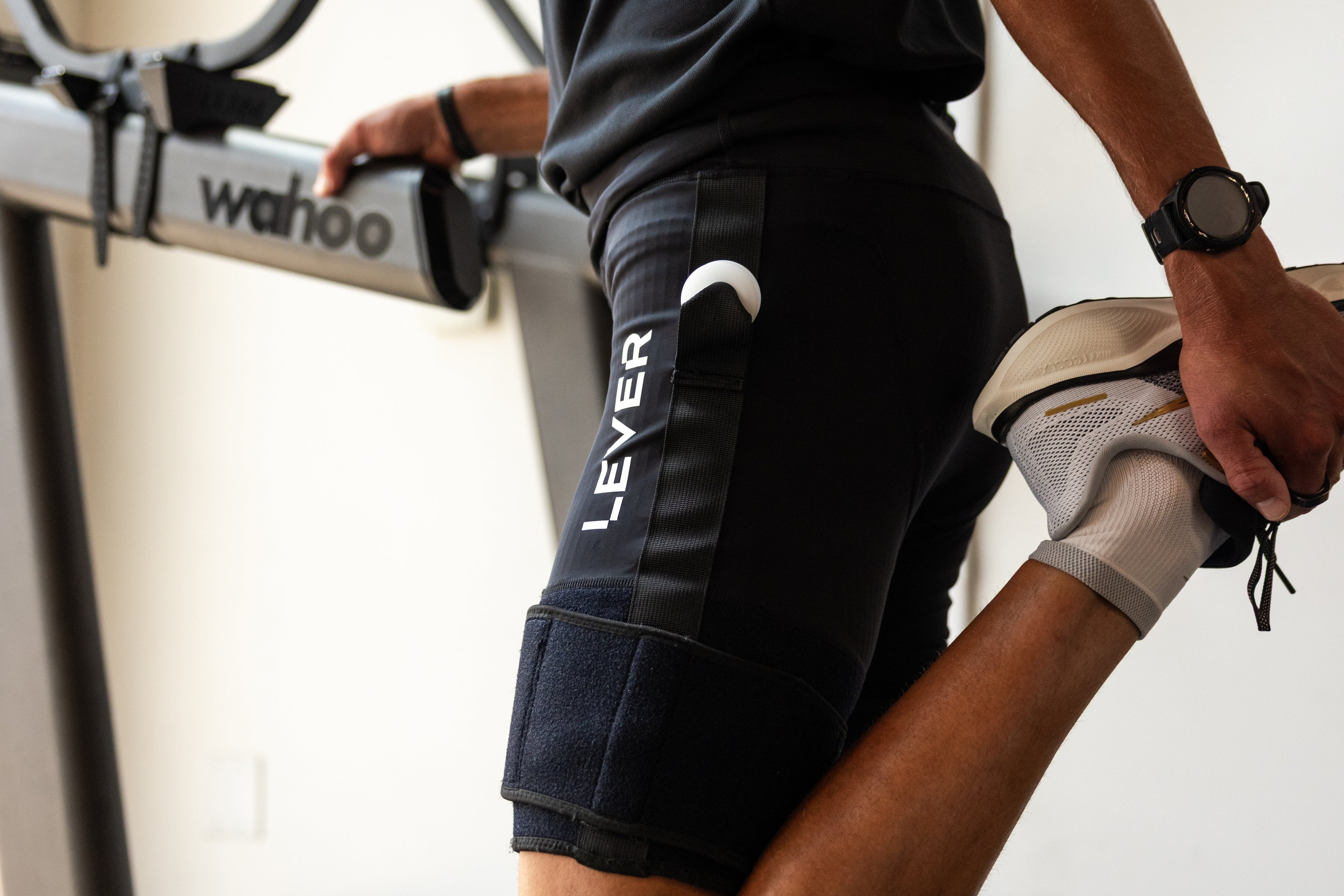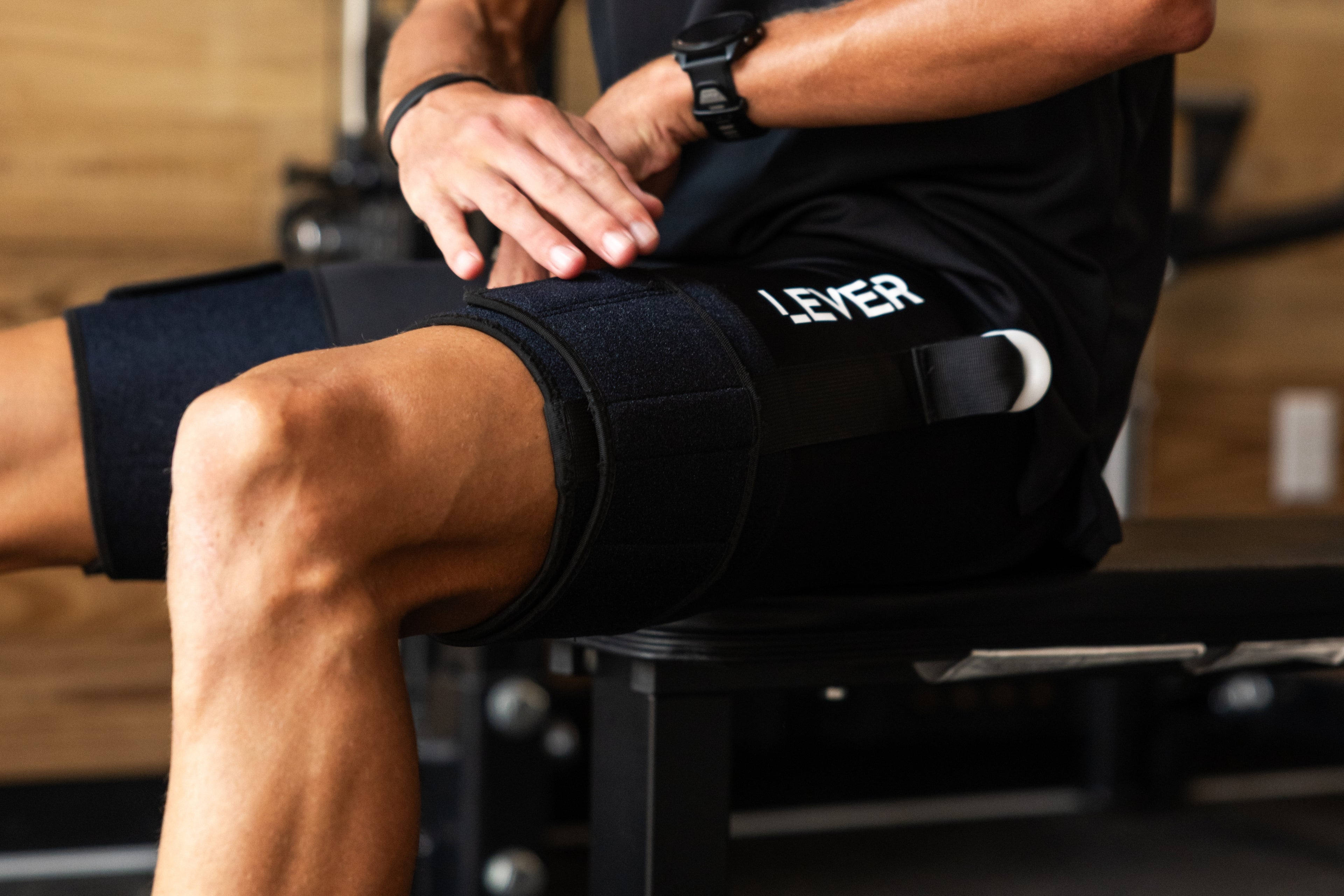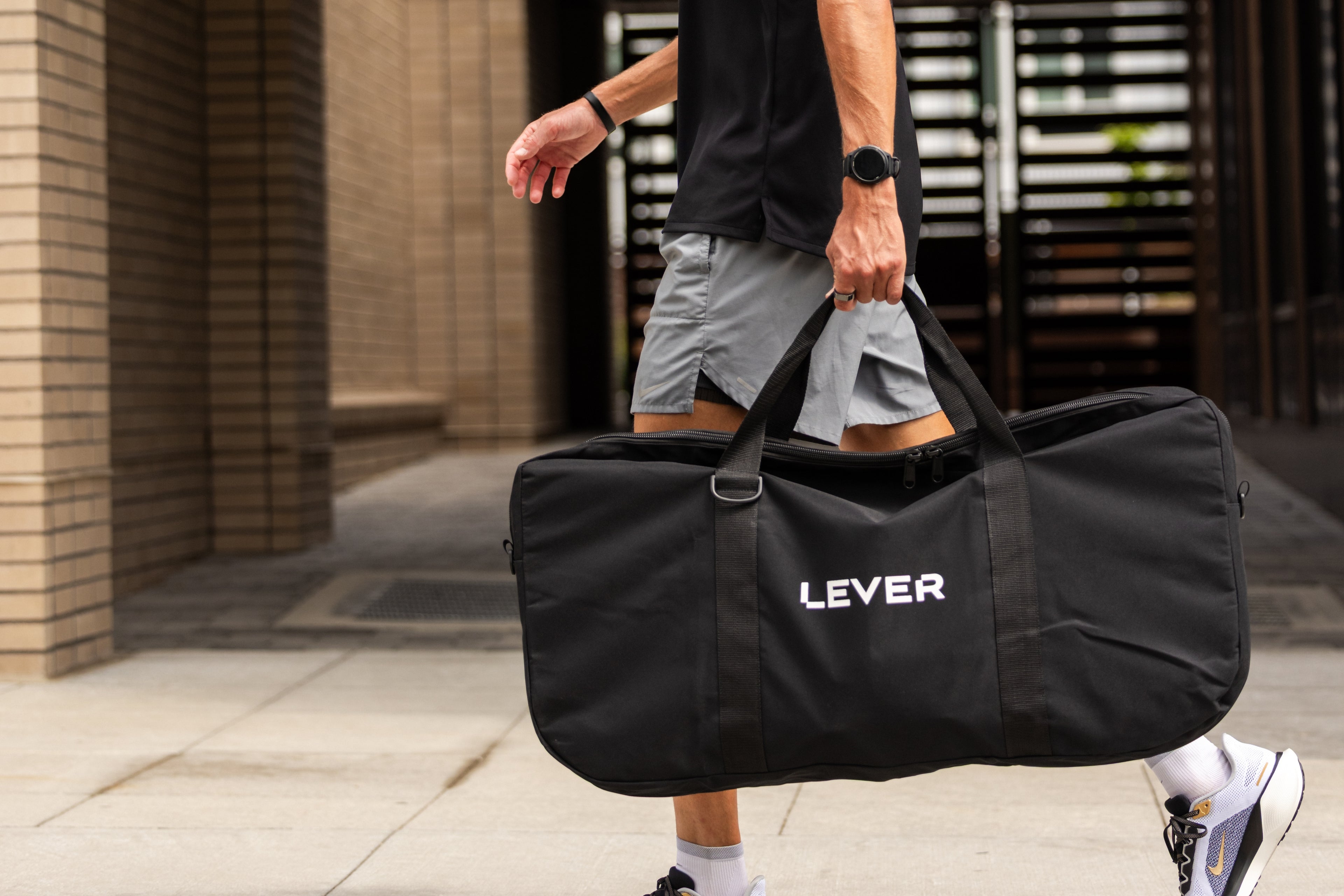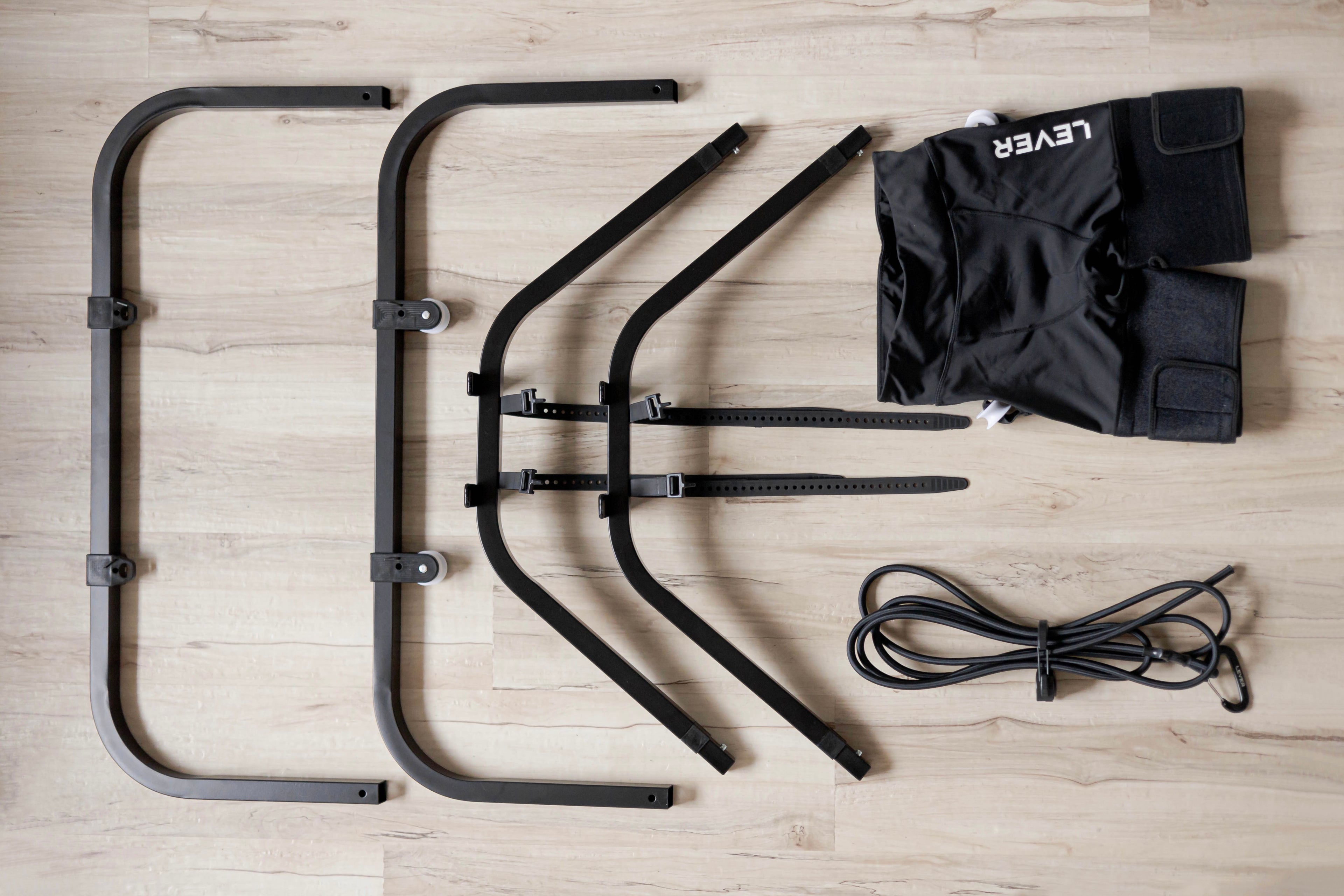At LEVER, we are dedicated to not only providing body weight support (BWS) technology to all runners but also making the science behind it more accessible. Our mission is to help YOU, whether you’re an everyday athlete or a Comeback Legend, understand how BWS impacts your body during running. We also want to clarify what remains unchanged when using LEVER. This blog addresses a fundamental question: What is body weight support, and how does it aid in running, recovery, and faster healing?
What is Body Weight Support?
Body weight support refers to any method that suspends part or all of your body weight, reducing the impact on your bones and joints. Methods include overhead harnesses, bicycles, water, air pressure, and LEVER’s unique frame with an elastic cord. LEVER devices allow runners and walkers to move on treadmills with reduced body weight, lowering it by up to 45 pounds (20 kilograms).

How Does Body Weight Support Work?
BWS primarily reduces the ground reaction force (GRF) - the force exerted by the ground as you run or walk. GRF consists of vertical and horizontal components, each affecting your body differently.
Vertical GRF:
When standing, your vertical GRF equals your body weight. However, during running, it can increase up to three times your body weight, significantly contributing to pain and overuse injuries (see image of a runner in a downstep). By reducing your weight with LEVER’s elastic cord, the vertical GRF decreases, lessening the impact on your hips, knees, and ankles.
Horizontal GRF:
Horizontal GRF is defined by forward or backward movement. While standing, it’s zero; during running or walking, it increases with speed. Horizontal GRF influences muscle firing patterns and gait mechanics. Importantly, horizontal GRF remains unchanged regardless of the BWS percentage, meaning you can maintain your natural gait with LEVER, unlike other rehabilitation methods such as deep water running, which require specific styles to achieve similar muscle activations.
LEVER helps you recover and heal faster by reducing the load on your bones while allowing you to maintain your natural gait. We hope this information equips you with the knowledge to confidently use LEVER as a training tool.
Citations:
- Brennan, Christopher T., et al. “Can Anti-Gravity Running Improve Performance to the Same Degree as over-Ground Running?” Journal of Sports Sciences, vol. 36, no. 20, 2018, pp. 2273-81. https://doi.org/10.1080/02640414.2018.1449092.
- Jensen, Bente R., et al. “Muscle Activation and Estimated Relative Joint Force During Running with Weight Support on a Lower-Body Positive-Pressure Treadmill.” Journal of Applied Biomechanics, vol. 32, no. 4, 2016, pp. 335-41. https://doi.org/10.1123/jab.2015-0075.
- Mercer, John A., et al. “Muscle Activity during Running with Different Body-Weight-Support Mechanisms: Aquatic Environment versus Body-Weight-Support Treadmill.” Journal of Sport Rehabilitation, vol. 23, no. 4, 2014, pp. 300-06. https://doi.org/10.1123/jsr.2013-0032.











